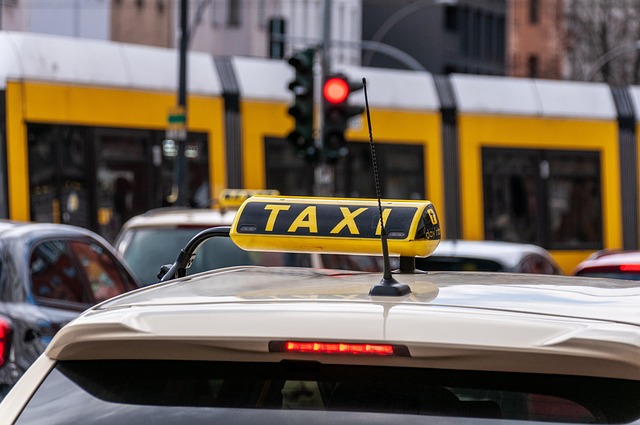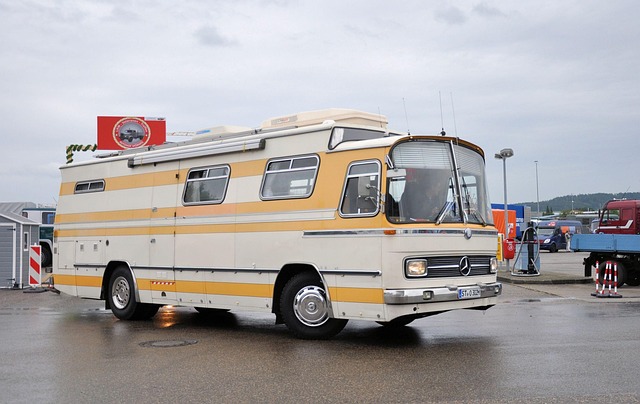Looking to register your car in California? This comprehensive guide will walk you through the process, ensuring a smooth experience. From understanding crucial requirements like DMV VIN verification to obtaining your license plate, each step is clearly explained. Before heading to the DMV, gather essential documents and be prepared for efficient navigation. Master the art of vehicle registration in The Golden State with these straightforward instructions.
- Understand California Car Registration Requirements
- Gather Necessary Documents for DMV Visit
- Perform Vehicle Identification Number (VIN) Verification
- Complete Application and Pay Fees at DMV
- Obtain License Plate and Registrate Your Vehicle
Understand California Car Registration Requirements

Before diving into the registration process, it’s crucial to understand California’s car registration requirements. The California Department of Motor Vehicles (DMV) mandates several steps to ensure the safety and legal operation of vehicles on state roads. One key step is the DMV vin verification, which involves checking the vehicle identification number (VIN) for any discrepancies or fraud. This process is essential in maintaining a secure and transparent automotive ecosystem.
Additionally, owners can opt for a mobile vin verifier or conduct a mobile vin inspection to streamline this verification step. These services provide convenient alternatives to traditional DMV visits, making it easier to meet the registration criteria. Understanding these requirements and leveraging available tools like mobile vin verification can significantly simplify the car registration process in California.
Gather Necessary Documents for DMV Visit

Before visiting the DMV to register your car in California, make sure to gather all the necessary documents for a smooth process. This includes your vehicle’s registration certificate from the previous state, proof of insurance, and a valid driver’s license. Additionally, you’ll need to provide a completed Application for Title and Registration form, which can be obtained from the DMV website. The key document here is the Vehicle Identification Number (VIN) verification, ensuring the car’s identity is accurately checked through a process like mobile VIN verification or inspection services.
Having these documents ready demonstrates your preparedness and streamlines the registration procedure. Remember, accurate and up-to-date information is crucial when dealing with official matters; thus, double-check all details before your visit. This proactive approach will save you time and potential frustration during the DMV process.
Perform Vehicle Identification Number (VIN) Verification

Before you can register your car in California, it’s crucial to have a Vehicle Identification Number (VIN) verification done. This step is essential as it ensures that your vehicle matches the information on record and helps prevent fraud or identity theft. You can perform this VIN verification in several ways, including using services like a mobile vin inspection or visiting a DMV office for an in-person check.
A simple online lookup or a call to the California DMV can confirm whether the VIN provided by the vehicle owner matches the one on file. Alternatively, a professional vin inspector can utilize specialized tools and databases to perform a comprehensive check, ensuring that your car’s details are accurate and current. This process is straightforward but critical in maintaining the integrity of California’s vehicle registration system.
Complete Application and Pay Fees at DMV

Once you’ve gathered all required documents, it’s time to visit your local California DMV office or complete the process online. The next step is to fill out a Vehicle Registration Application (form DV-105). This form requires detailed information about your car, including its make, model, year, and unique vehicle identification number (VIN). Along with your application, you’ll need to pay the necessary registration fees, which vary based on your vehicle’s type and age. The DMV offers various payment methods, ensuring convenience for all customers.
As part of the registration process, a dmv vin verification is crucial. This involves confirming the VIN accuracy and checking any reported theft or defects associated with the vehicle’s history. You can opt for a traditional in-person inspection or consider convenient alternatives like a mobile vin inspection, where a trained professional comes to your location for an on-site check. Alternatively, many services now offer remote vin verification through digital documentation and online submissions, making the process even more accessible.
Obtain License Plate and Registrate Your Vehicle

After confirming your vehicle’s eligibility for registration, it’s time to obtain a license plate and officially register your car with the California Department of Motor Vehicles (DMV). The first step involves getting a Vehicle Identification Number (VIN) verification. You can complete this process through a mobile VIN verifier or conduct a manual inspection using the DMV’s guidelines. A mobile vin inspector can swiftly validate the vehicle’s history, ensuring it meets all legal standards before proceeding with registration.
Once your VIN is verified, head to your nearest DMV office or utilize their online services to register your vehicle. Provide essential documents like proof of ownership, insurance, and identity. The DMV will issue a registration certificate and assign unique license plates for your car. Ensure these plates are securely mounted as per state regulations, making your vehicle readily identifiable on California roads.
Registering a car in California involves understanding specific requirements, gathering essential documents, and completing key steps. By performing a DMV VIN verification, ensuring all paperwork is in order, and paying the necessary fees, you can successfully register your vehicle. Remember to obtain your license plate after approval to fully legalize your car’s operation on California roads.



